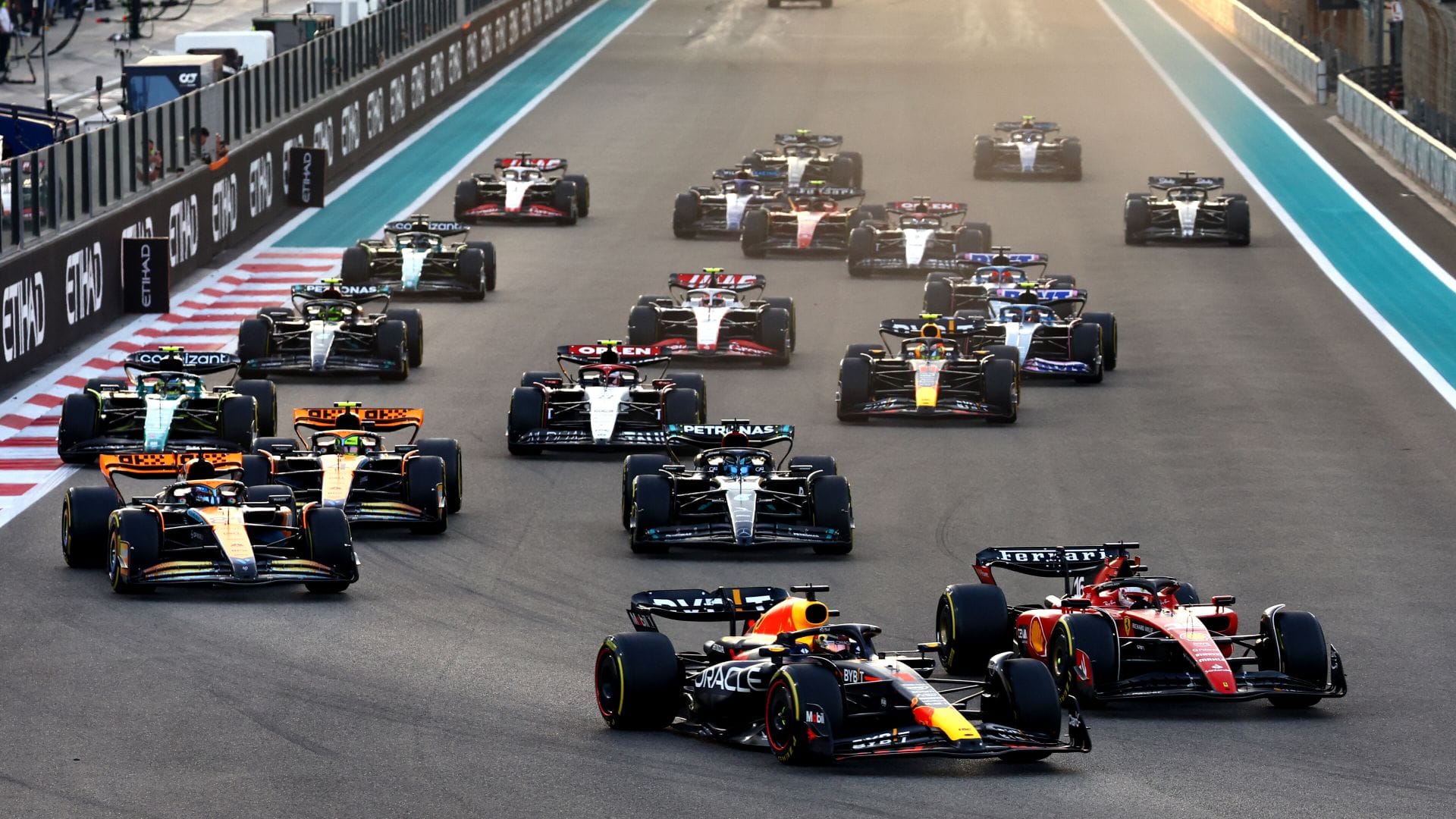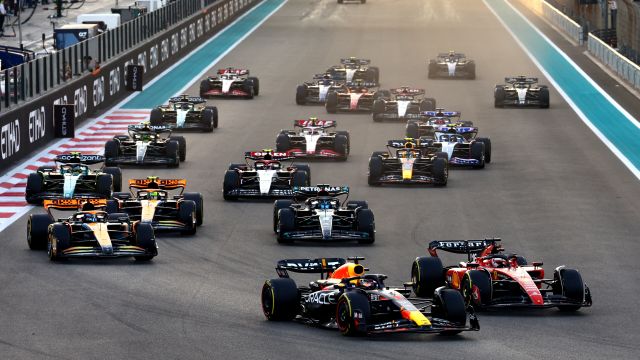How Much Does The Winner Of F1 Get Paid?


When it comes to the high-speed, adrenaline-fueled world of Formula 1 racing, have you ever wondered about the financial rewards that come with crossing the finish line first? The question of how much the winner of F1 gets paid is not just about the prize money; it’s about understanding the value and prestige associated with one of the most elite motorsport competitions in the world.
The winner of F1, particularly the winning team, is rewarded handsomely. Red Bull Racing, as the winning constructor, secured a staggering $140 million USD for the 2023 F1 season.
In Formula 1, as with any professional sport, there is a combination of revenue sources and distribution methods that contribute to a driver’s overall earnings. For the drivers, income is derived from not only race winnings but also from endorsements, sponsorships, and, to some extent, team investments.
In this article, the team from CasinosCanada.reviews, recognized as the platform with top F1 betting sites, has provided their expertise to help crunch the numbers for calculating the 2023 F1 prize money.
Key Takeaways
- Different revenue sources contribute to Formula 1 driver earnings, including race winnings, sponsorships, and endorsements.
- Drivers’ individual performances and contractual agreements can greatly impact their compensation packages.
- Financial aspects of Formula 1 have a substantial effect on the sport’s competitive landscape, as well as its global reach and fanbase.
Revenue Sources and Distribution
Formula 1’s revenue comes from a variety of sources, and its distribution is critical to the sport’s success and stability. Among the key revenue sources are sponsorships, endorsements, merchandise sales, and prize money. Teams such as Red Bull Racing, Ferrari, Aston Martin, and others rely on these sources of income to fund their competitive efforts and develop their cutting-edge technologies in pursuit of the World Championship.
Prize money plays a significant role in the overall revenue distribution within Formula 1. An estimated total of around $900 million is distributed among the teams based on their performance in the Constructors’ Championship each year. The champions typically receive about 14% of the prize pot, while the team finishing 10th still secures around 6%. This structure ensures a more equitable distribution of funds across the teams, promoting greater competition on the track.
In addition to this standard prize money distribution, there are various bonuses offered to the teams. For instance, Ferrari is believed to receive an additional 5% of the prize pool, amounting to roughly $50 million, due to their longstanding presence in the sport since its inception. Teams with recent success also enjoy extra bonuses, further incentivizing performance and encouraging ongoing investment in their racing programs.
Here is an approximate breakdown of the 2023 F1 prize money distribution for each constructor, based on where they finished in the 2023 F1 standings:
| Position | Team Name | Estimated Prize Money ($ USD) |
|---|---|---|
| 1 | Red Bull Racing | $140 million |
| 2 | Mercedes-AMG Petronas Formula One Team | $130 million |
| 3 | Scuderia Ferrari | $120 million |
| 4 | McLaren F1 Team | $115 million |
| 5 | Aston Martin Cognizant Formula One Team | $105 million |
| 6 | Alpine F1 Team | $95 million |
| 7 | Williams Racing | $85 million |
| 8 | Scuderia AlphaTauri | $80 million |
| 9 | Alfa Romeo Racing | $70 million |
| 10 | Haas F1 Team | $60 million |
As the popularity of Formula 1 continues to grow, so does its total revenue. Agreements like the current Concorde Agreement have facilitated more equitable distribution of funds, ensuring that smaller teams have the resources necessary to compete at the highest level. Sponsorships and endorsements continue to provide additional financial resources to the teams, supporting their ongoing efforts to achieve podium finishes and attract top talent. Overall, the combination of prize money, bonuses, sponsorships, and merchandise sales all contribute to the financial foundation of Formula 1, driving its continued success on the global stage.
Top Earners and Their Payments
Formula 1 is a highly competitive sport where the top drivers enjoy significant financial rewards. Analyzing the salaries and bonuses of some prominent F1 drivers reveals interesting insights into their earnings.
Max Verstappen, the three-time world champion, experienced a significant increase in his salary following his dramatic 2021 Driver’s Championship victory. Spanish media outlet Marca reported that his salary went from £19.6 million to £31.5 million after his win. In 2022 and 2023, Forbes estimated Verstappen’s earnings, including his salary and bonuses, to be around $60 million, making him F1’s highest-paid driver for the past two years.
Lewis Hamilton, a seven-time world champion, has consistently been one of the top earners in the sport. In recent years, his estimated salary stood at $35 million. Like Verstappen, Hamilton’s earnings are complemented by bonuses and external endorsements, making him one of the best-paid drivers.
It’s important to note that the financial rewards for the top F1 drivers go beyond their base salaries. Most drivers receive bonuses for achieving various milestones, such as winning individual races, securing pole positions, and winning championships. In addition, F1 drivers can supplement their income through personal sponsorships and endorsement deals.
In conclusion, the winner of F1 races and the championship is well-rewarded financially. Max Verstappen and Lewis Hamilton are prime examples of drivers who have enjoyed substantial earnings thanks to their success on the track. With talented prospects like Charles Leclerc emerging, the financial landscape of F1 is continuously evolving as their careers progress.
F1 Teams and Their Investment
Formula 1 is a highly competitive sport where each team invests significantly in various aspects such as technical development and personnel to gain an advantage. In 2023, the prize money for Formula 1 teams is distributed from a pot of over $900 million, with payouts depending on their Constructors’ Championship standings.
Budget Cap and Spending
To ensure a level playing field and prevent teams with greater financial resources from dominating the sport, the FIA introduced a budget cap. The budget cap restricts team spending on performance-related aspects to $145 million per year. This regulation applies to all teams, including top contenders such as Mercedes, Ferrari, Red Bull Racing, and others like McLaren, Aston Martin, and Alpine.
Top Teams
Mercedes, Red Bull, and Ferrari are known as the “big three” in Formula 1 due to their consistent success and significant investments in the sport. These teams have larger budgets and resources compared to other contenders, allowing them to secure top driver talent, invest in advanced technology, and maintain leading edge performance.
Mid-field Teams
Mid-field teams like McLaren, Aston Martin, and Alpine compete for positions just behind the top three. They have constrained budgets compared to the dominant teams but still invest considerable amounts in development, personnel, and infrastructure to move up the grid.
Lower-tier Teams
Lower-tier teams such as Williams, Haas, Alphatauri, and Alfa Romeo invest with limited resources, striving to improve their performances and ascend the rankings. These teams face financial constraints and must make strategic decisions on where to allocate their spending in order to optimize their potential return on investment.
In conclusion, Formula 1 teams invest heavily in the sport to ensure competitiveness, attract world-class talent, and achieve success on the track. The new budget cap serves to level the playing field and introduce a more equitable distribution of resources, resulting in closer competition and an exciting spectacle for fans all over the world.
Individual Performance and Contracts
The world of Formula 1 is highly competitive, with drivers vying for wins, championships, and lucrative contracts. Each driver’s earnings primarily consist of their salary and performance-related bonuses.
Max Verstappen, the current reigning world champion, reportedly earns around $60 million per year, having signed a five-year extension with his team, Red Bull in March 2023. His dramatic 2021 World Championship win led to a significant salary hike.
Another top earner in F1 is Lewis Hamilton, a seven-time world champion. In 2022, Hamilton was estimated to earn $35 million from his salary and bonuses before taxes. These are just two examples of F1’s highest-paid drivers, with additional stars like Fernando Alonso, Daniel Ricciardo, Sergio Pérez, Sebastian Vettel, and Valtteri Bottas also commanding impressive salaries.
It’s essential to note that while drivers do not get paid directly by F1, they typically have performance-related bonuses included in their contracts. For example, a driver may receive a bonus for achieving a certain number of race wins, pole positions, or finishing within the top positions in the drivers’ standings.
Moreover, drivers who have proven themselves in the sport and demonstrate exceptional talent can negotiate more favorable contractual agreements. For instance, younger talents like Yuki Tsunoda, Oscar Piastri, and Mick Schumacher, the son of the legendary Michael Schumacher, may have lower base salaries but could land better deals as their careers progress.
The following are approximate salary ranges for some notable F1 drivers:
| Driver | Salary Range |
|---|---|
| Max Verstappen | $55 million |
| Lewis Hamilton | $35 million |
| Lando Norris | $20 million |
| Carlos Sainz | $12 million |
| Valtteri Bottas | $10 million |
| Nico Hulkenberg | $2 million |
Overall, the winner’s payout in F1 depends on their individual performance, contracts, and any performance-related bonuses. In addition to base salaries, the potential for substantial payouts drives these elite athletes to compete at the highest level of their sport, ultimately aspiring to become world champion.
How Much Does The Winner Of F1 Get Paid? – Frequently Asked Questions
What is the prize money for winning an F1 race?
There isn’t a specific prize money awarded for winning an individual F1 race. Instead, the prize money is distributed based on the teams’ final standings at the end of the season. The total prize pot distributed among the teams is over $900 million.
Do F1 drivers receive bonuses for victories?
Yes, F1 drivers often receive bonuses for their performances, including victories. These bonuses may be part of the driver’s contract and can significantly increase their overall earnings. For example, Max Verstappen’s 2021 championship win reportedly led to a significant salary boost.
How is F1 prize money distributed among teams?
F1 prize money is distributed among the teams based on their final positions in the Constructors’ Championship at the end of the season. This means that teams that perform better throughout the season earn a larger share of the prize money.
How do F1 drivers’ salaries compare to their prize money?
F1 drivers’ salaries can be substantial, with top drivers earning tens of millions of dollars per year. These salaries often exceed the prize money distributed to the teams. For example, Max Verstappen’s estimated 2022 earnings, including salary and bonuses, totaled $60 million, according to Forbes.
What factors influence an F1 driver’s earnings?
An F1 driver’s earnings can be influenced by various factors, including their contract negotiations, individual performances, sponsorship deals, and their team’s success. Top-performing drivers can leverage their successes to secure higher salaries and bonuses, while drivers for winning teams may also benefit from higher earnings through team performance bonuses.





